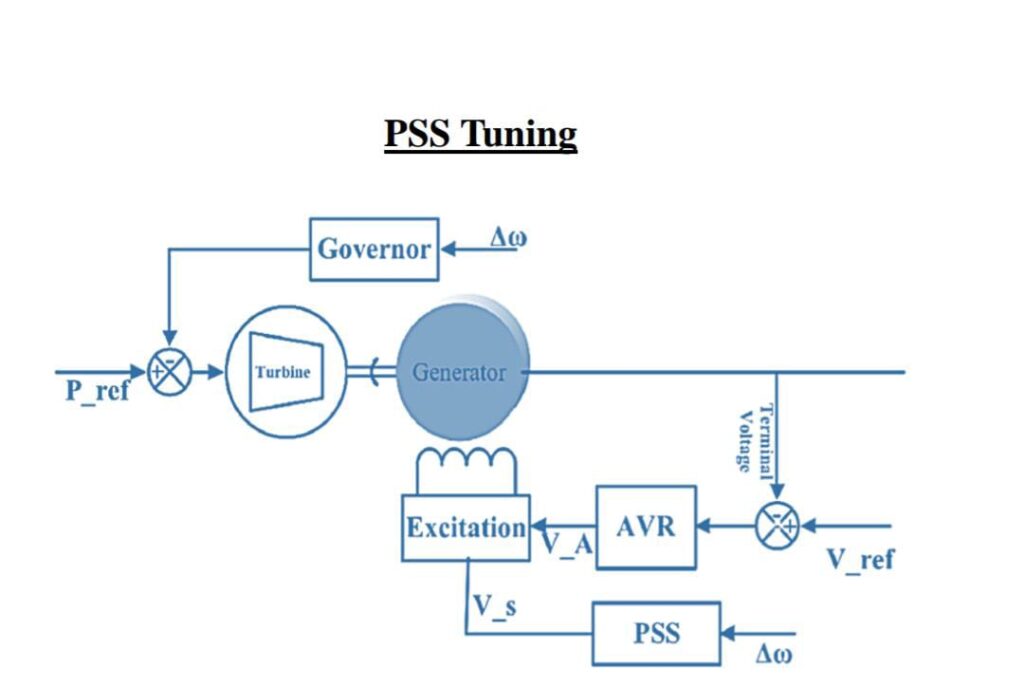
Conditions for Operation and Control with Grid:-
1. Synchronization:-
✓ Phase Angle Matching: The phase of the generator’s output voltage must match the phase of the grid voltage.
✓ Voltage Matching: The output voltage magnitude must match the grid voltage.
✓ Frequency Matching: The generator speed must match the grid frequency.
2. Voltage Regulation:
✓ The AVR adjusts the excitation voltage to maintain the generator’s terminal voltage within specified limits. It responds to changes in load and grid conditions to keep the voltage stable.
✓ Proper control of the excitation system ensures that the generator’s voltage remains within the required range and can react to variations in load or grid conditions.
3. Reactive Power Management:
✓ Synchronous generators can supply or absorb reactive power, depending on the grid requirements. The generator’s capability to control reactive power helps in maintaining voltage levels and overall grid stability.
✓ Generators are often required to operate within specified power factor limits (e.g., 0.95 lagging or leading). This helps in balancing the reactive power in the system and ensuring efficient power delivery.
4. Stability and Damping:
✓ The PSS helps dampen power system oscillations and improve system stability by adding damping to the generator’s control system. It enhances the dynamic response of the generator to grid disturbances.
✓ Rotor Angle Stability: The generator must maintain synchronism with the grid, which means it should remain in phase and continue to rotate at the same frequency. This is crucial for preventing loss of synchronism and potential grid instability.
Rotor angle stability in a synchronous machine refers to the ability of the machine to maintain synchronism with the grid during and after disturbances. It is a critical aspect of the stability of power systems.
In a synchronous machine, the rotor rotates at the same speed as the magnetic field produced by the stator, maintaining a constant rotor angle relative to the grid. This synchronous operation is essential for stable power generation and transmission.
The rotor angle is the angular position of the rotor relative to a reference point, typically the grid voltage. It represents the phase difference between the generator’s internal voltage and the grid voltage.
5. Protection and Safety: Protection systems, such as over current relays, under/over-voltage relays, and frequency protection devices, safeguard the generator and grid from abnormal conditions and faults.
6. Compliance with Standards and Regulations
